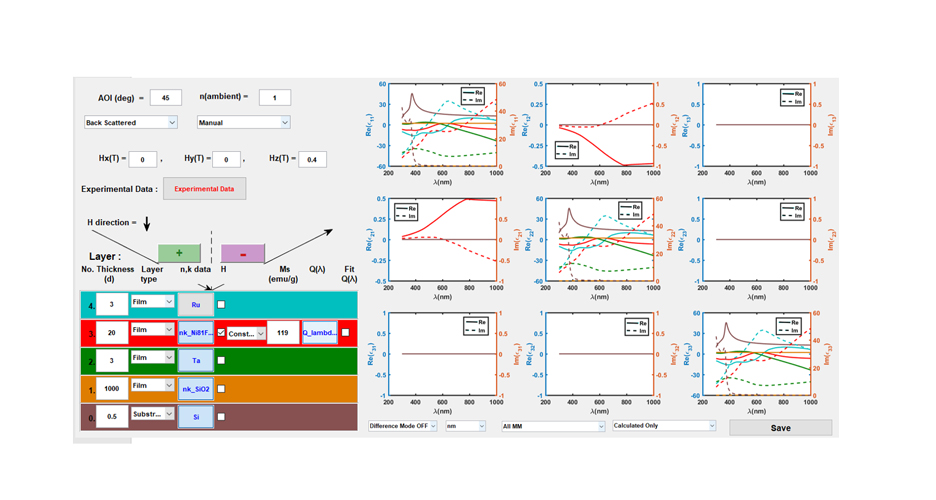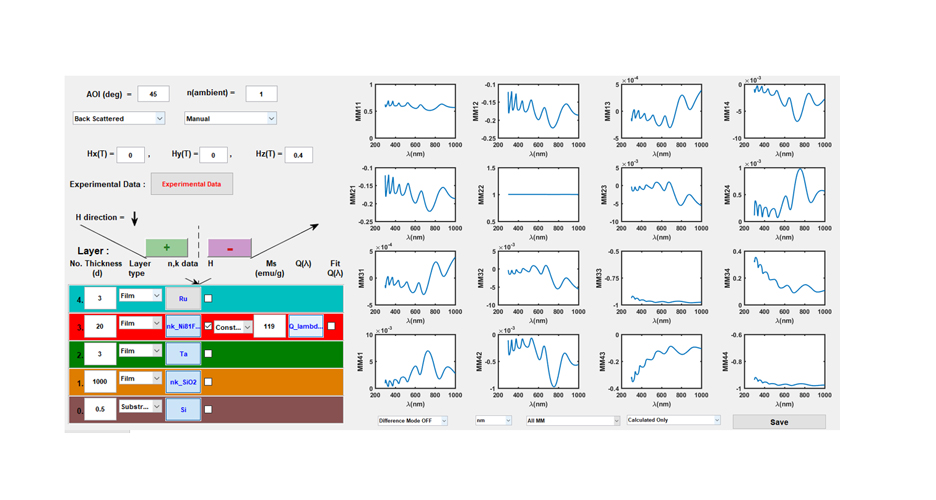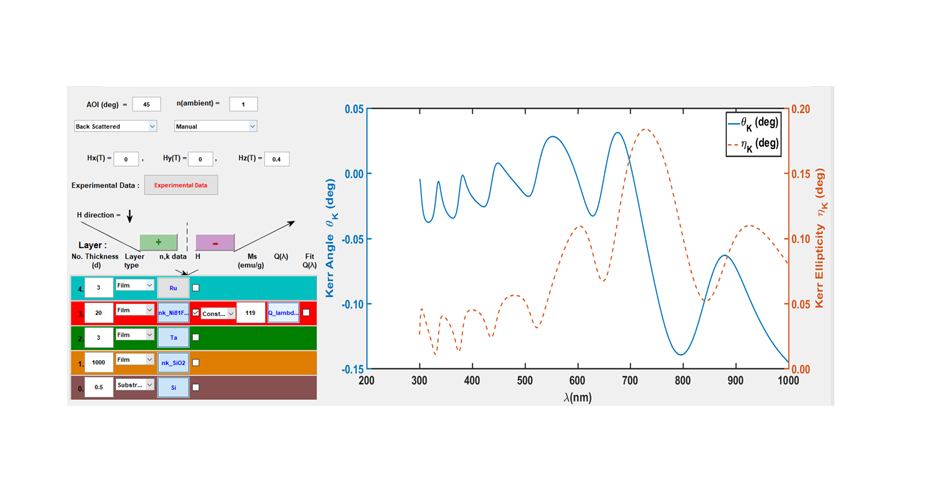Multiparameter optimization of magneto-optical response
MagOpS stands for Magneto-Optical Simulation and is based on a user-friendly GUI. It is a versatile software for optimizing the design of a magneto-optical sensor and its operation (wavelength range l, angle of incidence AOI, polarization state of incident and reflected/transmitted light). Furthermore, the wavelength dependent magneto-optical coupling constant Q can be extracted. Currently, the software code runs best on Matlab 2016a platform and upgrades its compatibility to latest Matlab version.





